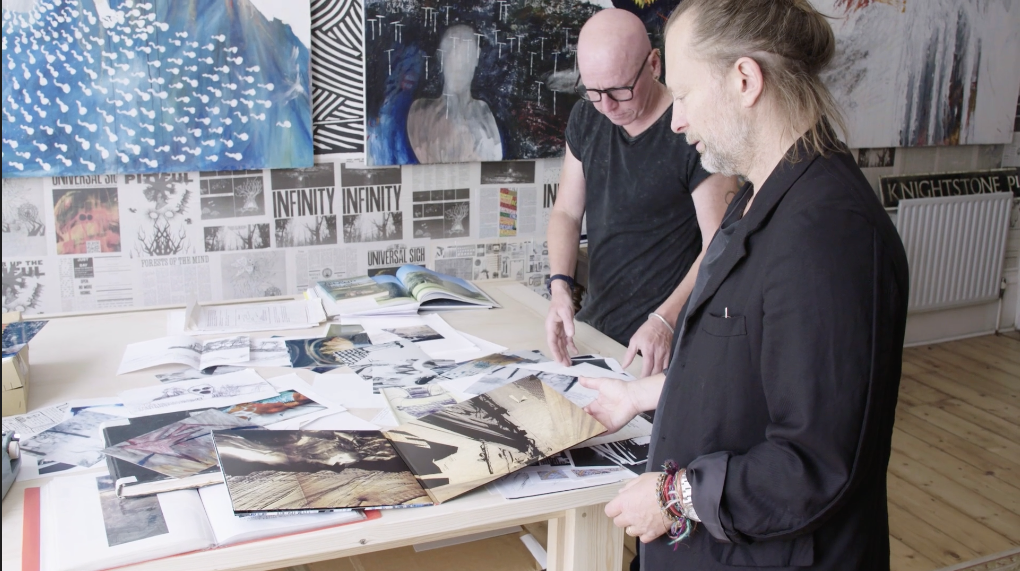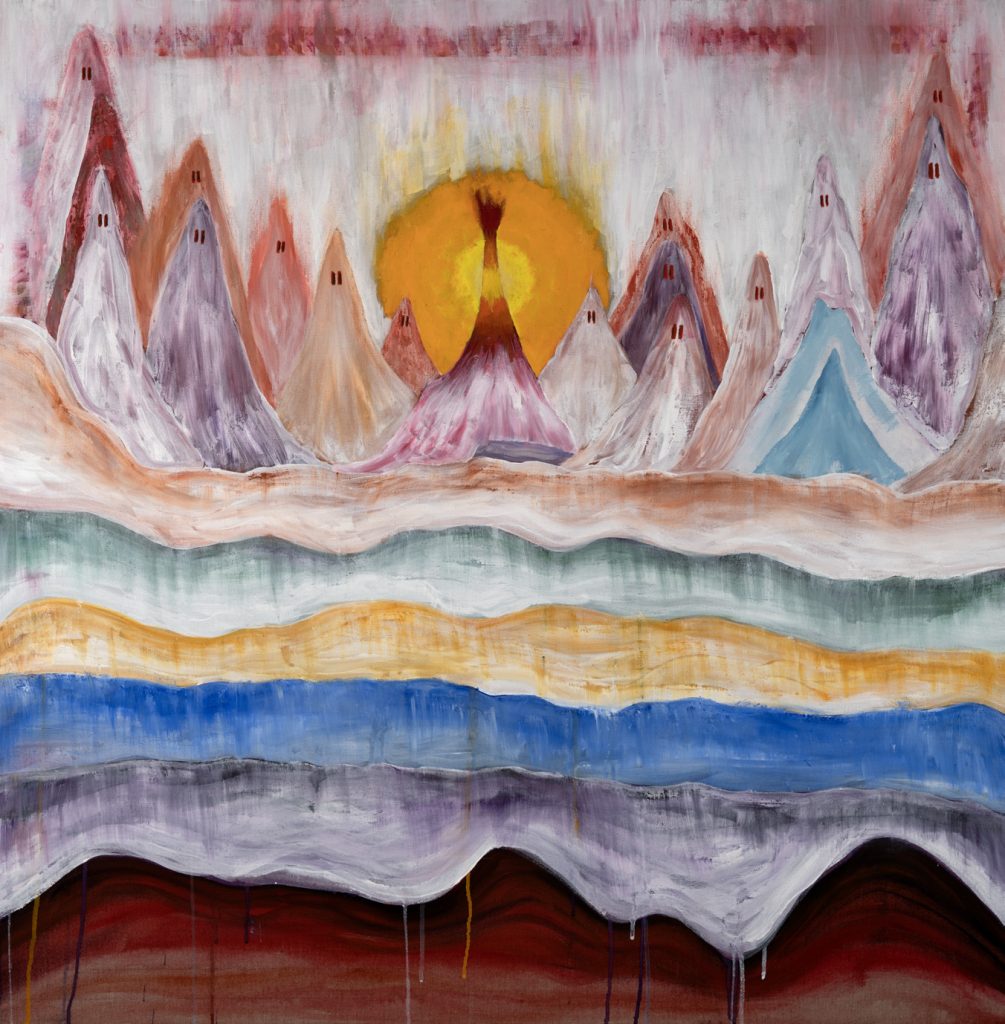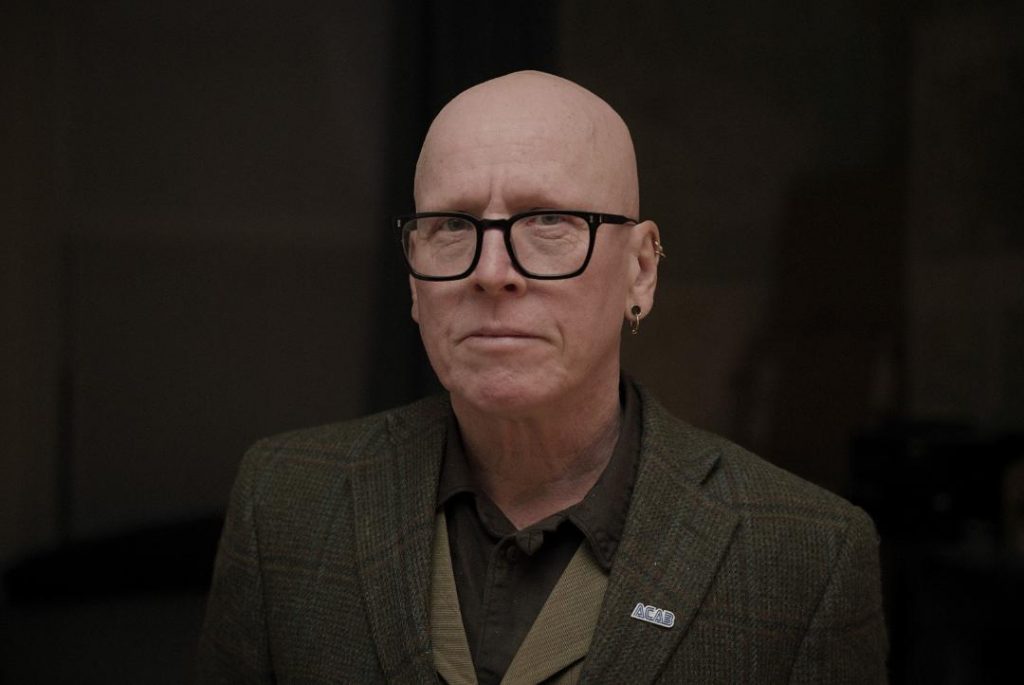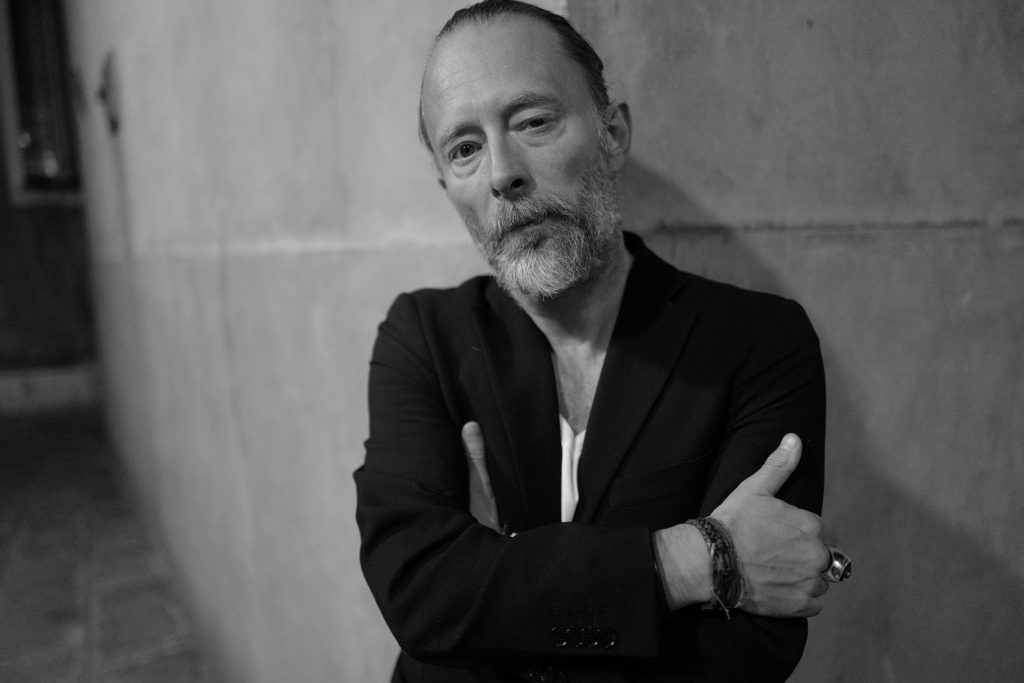The Crow Flies
We speak to the man behind the visual art of Radiohead, STANLEY DONWOOD, about his collaboration with THOM YORKE for their exhibition The Crow Flies at Tin Man Art in London, 6 - 10 December.

How did creating this collection of paintings compare to your work in the past?
It was different in many ways… for the whole time I’ve been trying to be an artist, I’ve been unable to stick to any one style, so the nature of my pictures varies quite considerably both in emotional mood and aesthetic sensibility, ranging from ‘actually quite nice’ to ‘fucking depressing’. This inability of mine to settle into a recognisable and eventually familiar style was initially a bit frustrating, because its quite useful to be recognisable in a very crowded art world, but I’ve got used to it and pretty much accepted that its just the way it is; there’s nothing I can do. So the way I make pictures has varied an incredible amount.
This time was the first time of using egg tempera, gouache, gesso and gold leaf on linen. I’ve mostly used acrylic paint in the past, although I’ve used oil too, as well as enamels. But the tempera is really very nice to use. I can’t really explain why, but it’s something to do with colour and fluidity and the fact that the painted surface stays ‘alive’ after it’s dried – you can continue to work it if you just add water.
Also it was the first time that Thom and I worked quite so closely on the paintings, taking turns to paint and taking the pictures in different directions- they’re very much the work of two people.


“We never have a plan. It’s quite possible that plans are anathema to any sort of interesting creativity”
Before you began the works, did you both first decide on a plan, such as your roles, number of works, materials, subject matter, working schedule?
We had no plan. We never have a plan. It’s quite possible that plans are anathema to any sort of interesting creativity. Really, look at these terms; ‘roles, number of works, materials, subject matter, working schedule’… they’re restrictive notions, and don’t allow for accident, error, mistakes… and it’s these, the unplanned and unexpected directions that art takes that are the interesting part of it all. I think that’s where it happens. If everything is planned and executed according to those plans then the result will necessarily be quite inert. We have no roles, we have no idea how many pictures (if any) we might make, we don’t know which materials might work, we’ve very little idea of the subject matter and we definitely don’t have a working schedule. Well, we sort of do, a bit, but it’s pretty haphazard, and is itself a kind of accident.

Some of the works use old-school techniques such as egg tempera and water-based gouache. What inspired you to use them and what’s the idea behind it?
We painted with egg tempera and gouache because I got the idea from somewhere that these paints are essentially the same as what were used back in the 15th century. I think that they’re made with the same pigments that have been used for centuries; they’re lovely to use, and the colours are really fantastically beautiful.
The earlier phase of these pictures (ones like Besuch or Goom) were partly inspired by Arabic maps made around the 15th century by various sailors and pirates who happened to have incredible cartographic skills. Because they were made so long ago and were executed on vellum they have backgrounds that are kind of light brown. I had a memory of making fake ‘old’ treasure maps when I was a child by soaking paper in strong black tea or coffee, then letting it dry and drawing the map. You know, a map with ‘here be dragons’ and ‘X marks the spot’; that kind of thing. So I thought it would be a good idea to do the same with the canvas, and we painted the canvases with a strong powdered coffee solution before we started painting with the tempera. It looked great, pretty much exactly how I’d wanted it to. The tempera worked well on it, and after painting for a while we began to erase parts of what we had painted with gesso, which also worked really well. We continued with gesso as a kind of erasing medium with the second phase of the painting, pictures like Somewhere You’ll Be There or The Lakes. The gesso sort of shifts the paint, not quite concealing what it’s supposed to, and the effect is intended to be somehow reminiscent of badly restored Mediaeval frescos. “Bad restoration” was what I kept saying. “Aim for a bad restoration!”
Can you tell us more about the Flemish woven tapestry included in the show?
I was on holiday, cycling around northern France last summer and I went to Bayeux, and saw the very famous Bayeux Tapestry. I’d wanted to see it for absolutely years, since I was about 8 or something. And it’s incredible; I loved it. It took about as long to look at it all as it would to watch a movie. So afterwards, when I was back in the UK and painting with Thom I was going on and on about the Tapestry and how I thought we should make one. And so we did a bit of research and found out how we could make that happen. I think its very appropriate because a lot of the work we have made is partly inspired by Mediaeval Arabic maps and paintings, and tapestry as a medium is fairly strongly associated with that period in history.
How would you describe, from your experience, the relationship between music and visual art?
I was about to say that I’m not an expert in this but then I thought that maybe I am, simply because I’ve been making art to go with music for ages now, years and years and years. So I do have a theory about it, but I stress that it’s just a theory and it’s not been scientifically tested or anything. But my idea is that music has a direct effect on art if it’s being played while the art is being made. It doesn’t really matter if the music is live or recorded. I’ve always felt that this happens, ever since I was a child drawing pictures while listening to whatever records I had, or to the radio. And different music has different effects – so, for example about 20 years ago I was writing a cheap thriller, a noir-ish kind of detective story, and I was writing a scary part that was set in some dark tunnels populated by savage flesh-eating pigs. I chose the most menacing music I had (this was before Spotify and all those things) which was mostly horror film soundtracks and also some weird modern classical music. And it definitely worked for pacing and mood in the writing. More recently I was trying to paint some quite angry pictures that I based on some early 20th century Parisian photographs. For this I listened to both Frank Sinatra and Sleaford Mods. Again, the results were exactly as I had hoped.
That’s just two examples, but each is quite a strong example. With the work I’ve done with Radiohead, or with Thom’s solo work and other projects the music/visual thing is a bit more vague, and much more subtle, but it’s definitely there. Or so I like to think.


In one word can you describe your life as an artist?
Odd.
In another word, your experience working with Thom Yorke over the last 30 years?
Interesting.
What advice do you give anyone wanting to pursue a career in visual art?
I’ve often thought that learning how to be a plumber would be a good idea, but it’s not like I took my own advice so, you know, I’ve no idea what I’m talking about. But if you really, really want to be an artist of some sort you have to do whatever it is that you do a lot, and all the time. Don’t give up. If you meet the devil at a crossroads one dark night, seriously consider selling your soul and have a full and frank discussion about the relative merits and disadvantages of being a successful artist throughout a long and happy career, and then spending an eternity in unbearable torment. Tell the devil thanks, but no thanks, and have another look at that plumbing course. Draw several portraits of the devil though, and try to get at least one of them exhibited.
“If you meet the devil at a crossroads one dark night, seriously consider selling your soul and have a full and frank discussion about the relative merits and disadvantages of being a successful artist”
What’s next for you – any plans you can tell us about?
Hmm, okay. There’s Part Two of The Crow Flies in December – same place, same dates (except in December) and the same art, only completely different. It’s part two because we couldn’t fit it all in at the same time, and also, to be honest it would have been a bit much… And the year after next, me and Thom have got a big exhibition in a fancy museum.
The exhibition, ‘The Crow Flies’ at the Tin Man Art gallery in South Kensington, is split into two parts, one which took place in September, and the second which runs from 6 – 10 December. For more information you can view the gallery website www.tinmanart.com








